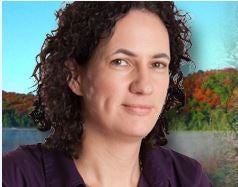Peatland carbon accounting across Canada’s boreal zone

Canadian Forest Service, Natural Resources Canada
Abstract:
Peatlands are an important component of the Canadian boreal landscape. In total peatlands occupy approximately 1 million km2 area (17% of the boreal ecozone) and store approximately 137 petagrams (137 x 1012 kg) of organic carbon. These peatlands also occur in areas that are thought to be sensitive to climate change and thus have important implications for feedbacks to climate. Despite the importance of the peatlands and the carbon they store and emit, we currently we do not report organic soils in our international reporting. In this presentation I will describe a three-year project, funded by Natural Resources Canada under the Canadian Boreal Forest Agreement (CBFA) that aims to produce national estimates of peatland C emissions and removals. These estimates will be calculated using a newly developed, simplified module (the Canadian Model for Peatland Simulations [CaMPS]), of peatland carbon dynamics that will integrate with the national Carbon Budget Model of the Canadian Forest Sector (CBM-CFS). The module will be based on knowledge of key carbon cycling processes of different peatland types (fen, bog, swamp). The module recognizes the unique processes that influence carbon cycling in peatlands, resulting in carbon emissions to, and removals from, the atmosphere. These include the presence of deep organic (peat) soil layers, the influence of a fluctuating water table on oxygen conditions, and new biomass pools that are not currently modelled in upland forest systems (i.e., mosses, sedges and shrubs). In addition to the emission and removal of carbon dioxide, methane emissions produced from anaerobic decomposition in the organic soil and methane removals from oxidation will be simulated. Phase 1 of the project is currently underway, which involves spatial databases being compiled to provide the “best available” spatial input layers for the model and aspatial databases being compiled for module calibration and evaluation. Conceptualization of the algorithms for the module is complete and initial programming and testing has begun. In phase 2, CaMPS will be further developed to include permafrost dynamics and disturbances (e.g., fires, insect, permafrost thaw, hydroelectric dam reservoirs, harvesting, etc.). This work will contribute to an understanding of the natural range of variation in peatland ecosystems and of the vulnerability of carbon stocks in Canada’s boreal zone to natural and anthropogenic disturbance and climate change.
Coffee provided. Bring your mug!